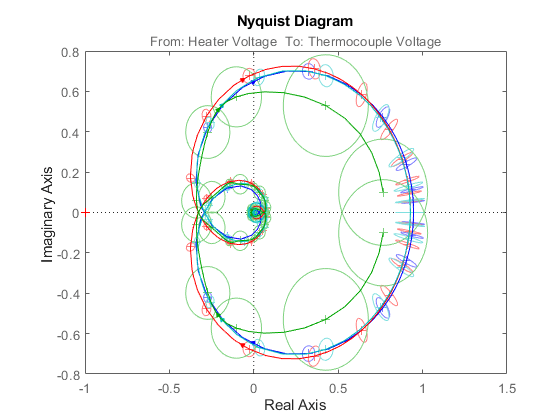Grundlagen zur Identifikation linearer Modelle
Lineare Modelle sind die einfachsten Modelle, die Sie mithilfe von System Identification Toolbox™ identifizieren können. Sie können eine lineare Modellidentifikation verwenden, wenn sich Ihre Systemdynamik mithilfe eines linearen Modells vollständig erfassen lässt. Um lineare Modelle zu identifizieren, beginnen Sie mit den Eingangs-/Ausgangsdaten in der Zeit- oder Frequenzdomäne und einer Modellstruktur wie einem Zustandsraum- oder Transferfunktionsmodell. Die Software passt die freien Modellparameter iterativ an, um den Unterschied zwischen dem gemessenen Ausgang und der simulierten Modellantwort auf die Eingangsdaten zu minimieren. Mit der Toolbox können Sie unter anderem die folgenden Aufgaben durchführen:
Schätzen linearer Modelle mithilfe einer spezifischen Modellstruktur.
Verwenden eines Black-Box-Modellierungsansatzes und Untersuchung, welche Modellstruktur sich für die Daten am besten eignet.
Erstellen eines vorläufigen linearen Modells zur Initialisierung der Parameter des zu schätzenden Modells.
Einbinden von Systeminformationen in das Modell durch Setzen bekannter Parameter auf bestimmte Werte.
Verwenden einer regularisierten Schätzung durch Verringerung der Unsicherheit in Ihrem Modell durch Beschränkung der Modellflexibilität.
Themen
Identifizieren linearer Modelle
- Identifizieren linearer Modelle mithilfe der App „System Identification“
Identifizieren Sie lineare Black-Box-Modelle anhand von Single-Input/Single-Output-(SISO-)Daten mithilfe der App „System Identification“. - Identifizieren linearer Modelle mithilfe der Befehlszeile
Sie können mithilfe der Befehle der System Identification Toolbox lineare Modelle anhand von Multiple-Input/Single-Output-(MISO-)Daten identifizieren. - Frequency Domain Identification: Estimating Models Using Frequency Domain Data
This example shows how to estimate models using frequency domain data. - Estimation Report
The estimation report contains information about the results and options used for a model estimation.
Auswählen der Modellstruktur
- About Identified Linear Models
System Identification Toolbox software uses objects to represent a variety of linear and nonlinear model structures. - Available Linear Models
Summary of linear model types that you can use for system identification. - Black-Box-Modellierung
Die Black-Box-Modellierung ist hilfreich, wenn Sie primär daran interessiert sind, die Daten unabhängig von einer bestimmten mathematischen Struktur des Modells anzupassen. - Model Structure Selection: Determining Model Order and Input Delay
This example shows some methods for choosing and configuring the model structure. - Modeling Multiple-Output Systems
Use a multiple-output modeling technique that suits the complexity and internal input-output coupling of your system. - Types of Model Objects
Model object types include numeric models, for representing systems with fixed coefficients, and generalized models for systems with tunable or uncertain coefficients.
Modellieren von Objektstrukturen und Randbedingungen
- Linear Model Structures
Linear models in System Identification Toolbox take the form of model objects that are linear model structures. You can construct model objects directly or use estimation commands to both construct and estimate models. You can also modify the properties of existing model objects. - Imposing Constraints on Model Parameter Values
Constrain the adjustments that the estimation algorithm can make to individual model parameters by using theStructureproperty of the mode object.
Regularisierung
- Regularized Identification of Dynamic Systems
This example shows the benefits of regularization for identification of linear and nonlinear models. - Estimate Regularized ARX Model Using System Identification App
This example shows how to estimate regularized ARX models using automatically generated regularization constants in the System Identification app. - Regularized Estimates of Model Parameters
Regularization is the technique for specifying constraints on the flexibility of a model, thereby reducing uncertainty in the estimated parameter values.
Weitere Themen
- Loss Function and Model Quality Metrics
Configure the loss function that is minimized during parameter estimation. After estimation, use model quality metrics to assess the quality of identified models. - Effect of Input Intersample Behavior on Continuous-Time Models
The intersample behavior of the input signals influences the estimation, simulation and prediction of continuous-time models.

